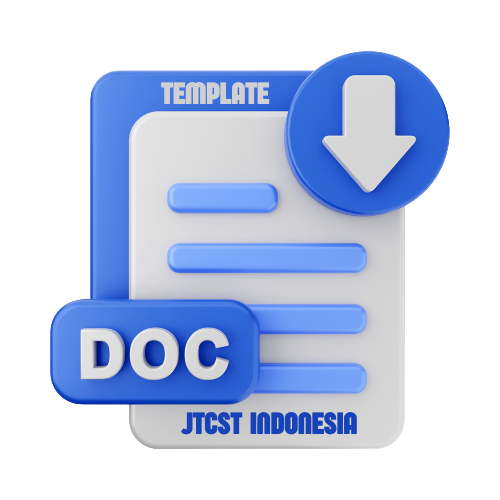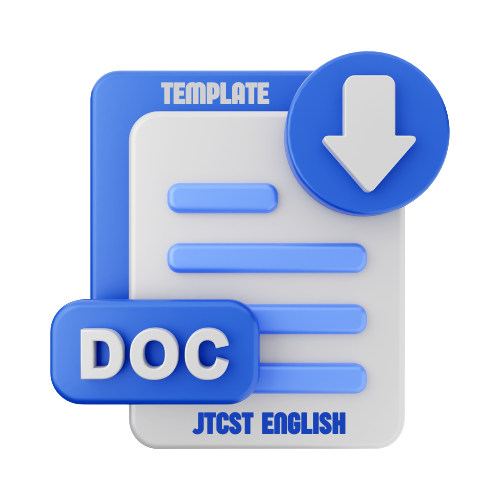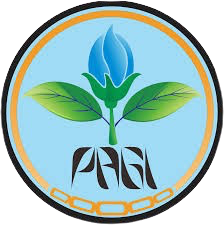Biological Agent’s Effectiveness for Control of Diamondback Moth Larvae (Plutella xylostella Linn) with Different Population Levels on Lettuce
DOI:
https://doi.org/10.22219/jtcst.v2i2.10526Keywords:
B. bassiana, Effectivity, Metarhizium sp.Abstract
Tritip caterpillars (Plutella xylostella) are pests that cause damage and reduce lettuce production. Control of P. xylostella pests can be done using biological agents or synthetic insecticides. Synthetic chemical pesticides in the long term can be used for resistance and resurgence of pests. Biological agents of B. bassiana, Metarhizium sp., and Trichoderma sp. can be used as an alternative solution to controlling P. xylostella. Research to examine the use of biological agents using B. bassiana, Metarhizium sp. and Trichoderma sp. to control P. xylostella attacks at different levels of pest participation. The study was conducted from 19 September to 9 November 2018 in Sidomukti, Bandungan, Semarang. The study used a completely randomized 5x3 split-plot pattern design with 3 replications. The main plot is the type of biological agents: A1: B. bassiana, A2: Metarhizium sp., A3: Trichoderma sp., A4: Insecticide and A5: control. The subplot is the pest population level: B1 = 1 larvae/plant, B2 = 2 larvae/plant, and B3 = 3 larvae/plant. Data were analyzed using ANOVA and continued with Duncan's Multiple Range Test. The results showed that biological agents and insecticides increased pest mortality, the percentage of healthy leaves, decreased the percentage of damaged leaves, the level of pest defense, and reduced the yield of lettuce.
Downloads
References
Badan Pusat Statistik (BPS). (2017). Kecamatan Bandungan dalam Angka 2017. semarangkab.bps.go.id. Diakses pada 25 Oktober 2019.
Deciyanto, S., & Indrayani, I. G. A. A. (2009). Jamur entomopatogen Beauveria bassiana: potensi dan prospeknya dalam pengendalian hama tungau. Perspektif, 8(2), 65 – 73.
Dirgayana, I. W., Sumiartha, I. K., & Adnyana, I. M. M. (2017). Efikasi insektisida berbahan aktif (klorpirifos 540 g/l dan sipermetrin 60 g/l) terhadap perkembangan populasi dan serangan hama penggulung daun Lamprosema indicata Fabricius (lepidoptera: pyralidae) pada tanaman kedelai. E-Jurnal Agroteknologi Tropika, 6(4), 378 – 388.
Freed, S., Liang, J. F., Naeem, M., Shun-Xia, R., & Hussian, M. (2012). Toxicity of proteins secreted by entomopathogenic fungi against Plutella xylostella (lepidoptera: plutellidae). International Journal Agriculture and Biology, 14(2), 291 – 295.
Gusnawaty, H. S., Taufik, M., & Herman. (2014). Efektifitas Trichoderma indigenus sulawesi tenggara sebagai biofungisida terhadap Colletotrichum sp. secara in-vitro. Jurnal Agroteknos, 4(1), 38 – 43.
Helmi, D. Sulistyanto, & Purwatiningsih. (2015). Aplikasi agen pengendali hayati terhadap populasi hama (Plutella xylostella Linn. dan C. pavonana Zell.) dan musuh alaminya pada tanaman kubis di desa kalibaru kulon, kab. banyuwangi. Jurnal Ilmu Dasar, 16(2), 55 – 62.
Herlinda, S. (2010). Spore density and viability of entomopathogenic fungal isolates from indonesia, and their virulence against Aphis gossypii Glover (homoptera: aphididae). Tropical Life Sciences Research, 21(1), 13 – 21.
Julaily, N., Mukarlina, & Setyawati, T. R. (2013). Pengendalian hama pada tanaman sawi (Brassica juncea L.) menggunakan ekstrak daun pepaya (Carica papaya L.). Jurnal Protobiont, 2(3), 171 – 175.
Prabaningrum, L., Uhan, T. S., Nurwahidah, U., Karmin, & Hendra, A. (2013). Resistensi Plutella xylostella terhadap insektisida yang umum digunakan oleh petani kubis di sulawesi selatan. Jurnal Hortikultura, 23(2), 164 – 173.
Purnama, H., Hidayati, N., & Setyowati, E. (2015). Pengembangan produksi pestisida alami dari Beuveria bassiana dan Trichoderma sp menuju pertanian organik. Warta, 18(1), 1 – 9.
Rusdy, A. (2009). Efektivitas ekstrak nimba dalam pengendalian ulat grayak (Spodoptera litura f.) pada tanaman selada. Jurnal Floratek, 4, 41 – 54.
Supriadi. (2013). Optimasi pemanfaatan beragam jenis pestisida untuk mengendalikan hama dan penyakit tanaman. Jurnal Litbang Pertanian, 32(1), 1 – 9.
Sutopo, D, & Indriyani, I. G. A. A. (2007). Status, teknologi, dan prospek B.Bassiana untuk pengendalian serangga hama. Malang: Balai PenelitianTanaman Tembakau dan Serat.
Trizelia, Syahrawati, M., & Mardiah, A. (2011). Patogenitas beberapa isolat cendawan entomopatogen Metarhizium Spp. terhadap telur Spodoptera litura Fabricius (lepidoptera: noctuidae). Jurnal Entomologi Indonesia, 8(1), 45 – 54.
Utari, N. M. W., Sudiarta, I. P., & Bagus, I. G. N. (2015). Pengaruh media dan umur biakan jamur Metarhizium anisopliae M. terhadap tingkat kematian larva Oryctes rhinoceros L. (scarabaeidae; coleoptera). E-Jurnal Agroekoteknologi Tropika, 4(2)
Winarto, L., & Nazir, D. (2004). Teknologi pengendalian hama Plutella xylostella dengan insektisida dan agensia hayati pada kubis di kabupaten karo. Jurnal Pengkajian dan Pengembangan Teknologi Pertanian, 7(1), 27 – 33.
Downloads
Published
How to Cite
Issue
Section
License
Copyright (c) 2020 Mumtahanah et al.

This work is licensed under a Creative Commons Attribution-ShareAlike 4.0 International License.
Authors who publish with this journal agree to the following terms:
- Authors retain copyright and grant the journal right of first publication with the work simultaneously licensed under a Creative Commons Attribution License that allows others to share the work with an acknowledgement of the work's authorship and initial publication in this journal.
- Authors are able to enter into separate, additional contractual arrangements for the non-exclusive distribution of the journal's published version of the work (e.g., post it to an institutional repository or publish it in a book), with an acknowledgement of its initial publication in this journal.
- Authors are permitted and encouraged to post their work online (e.g., in institutional repositories or on their website) prior to and during the submission process, as it can lead to productive exchanges, as well as earlier and greater citation of published work (See The Effect of Open Access).











